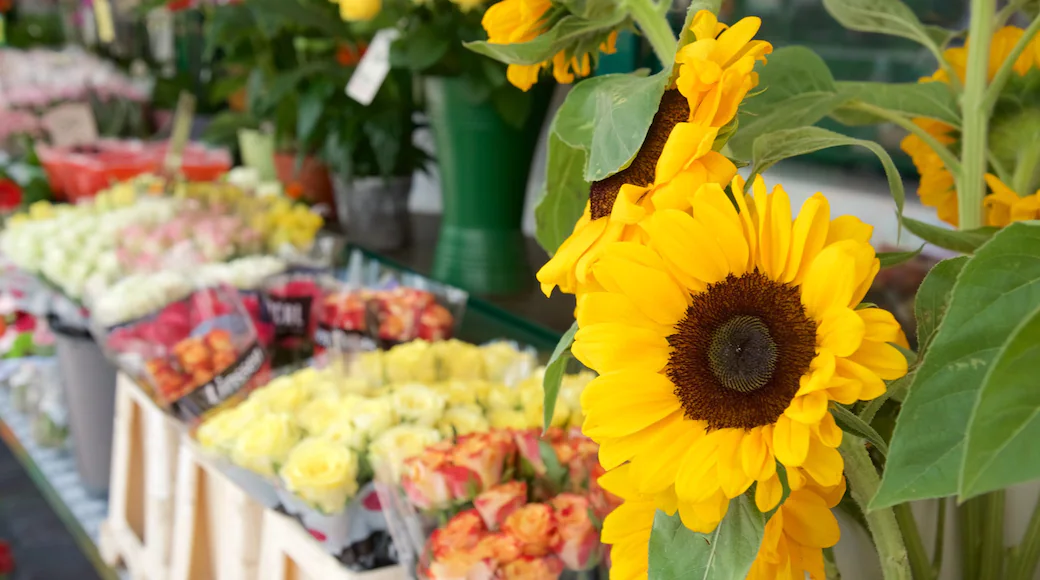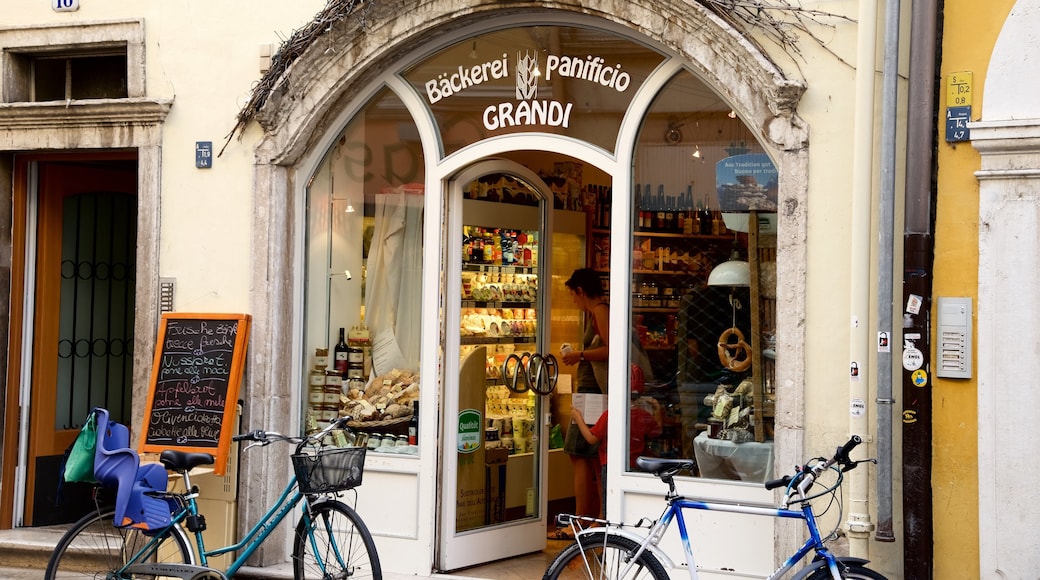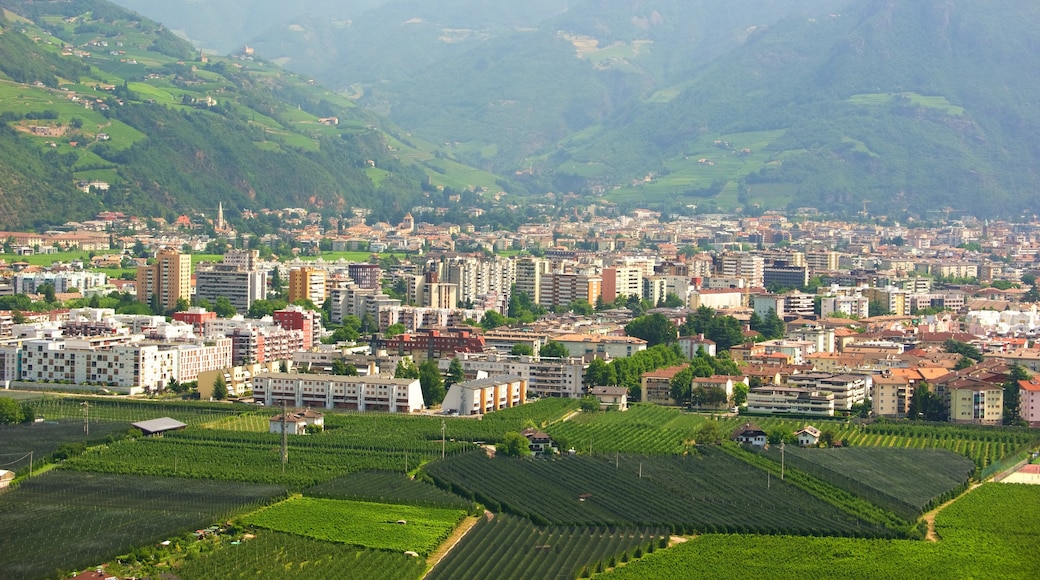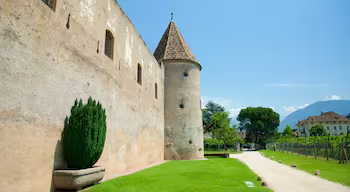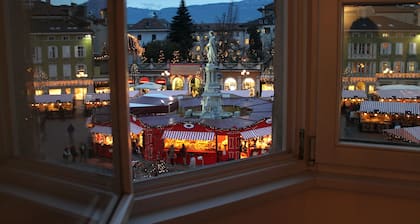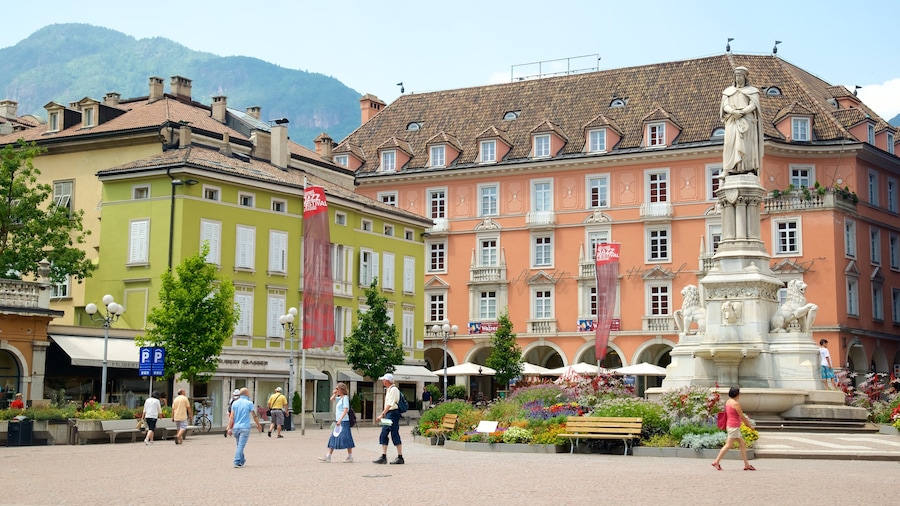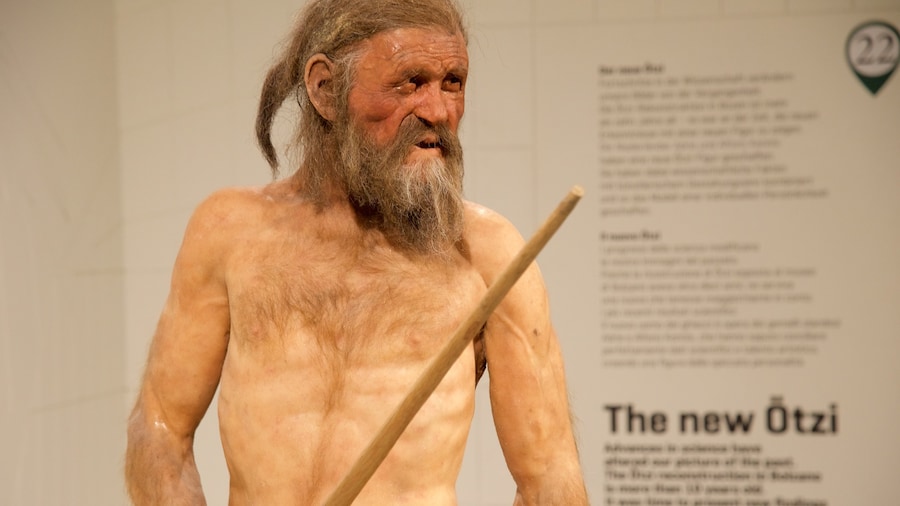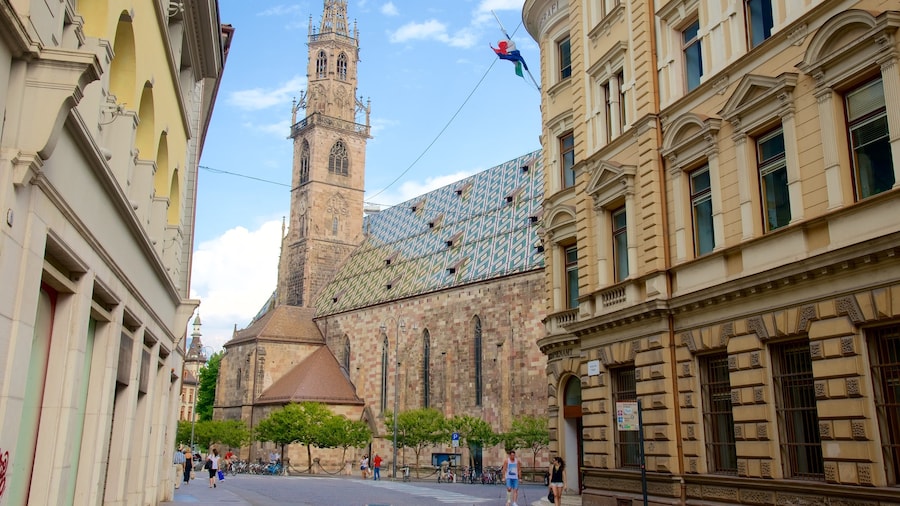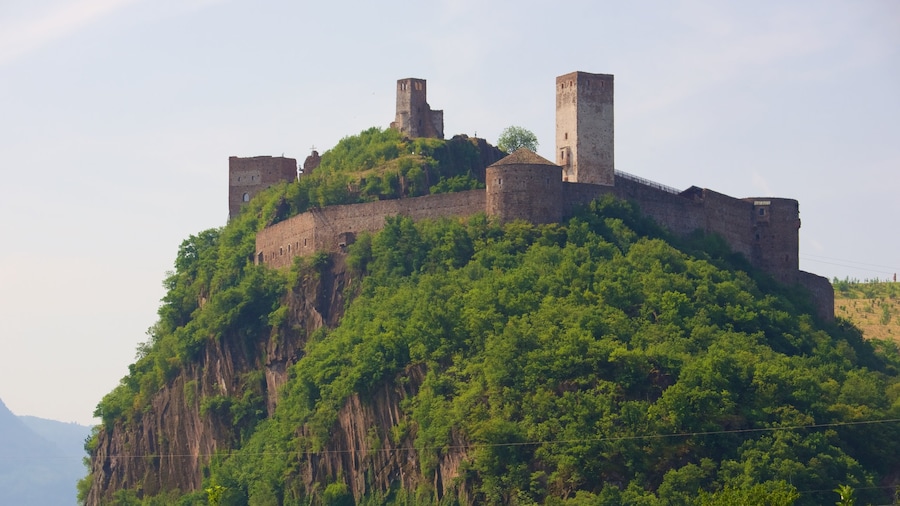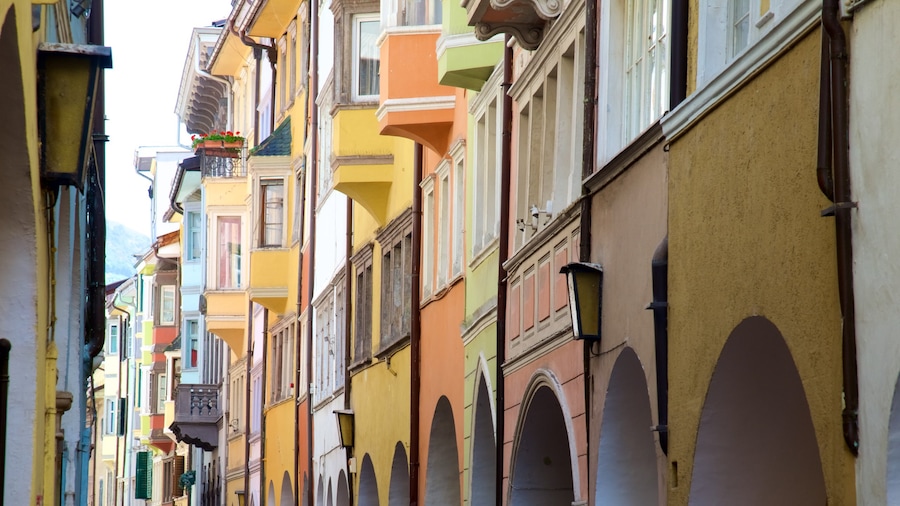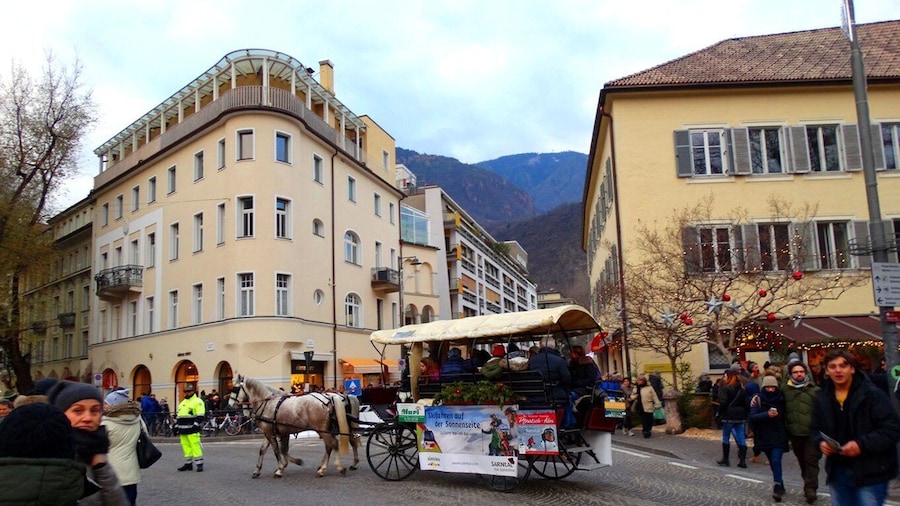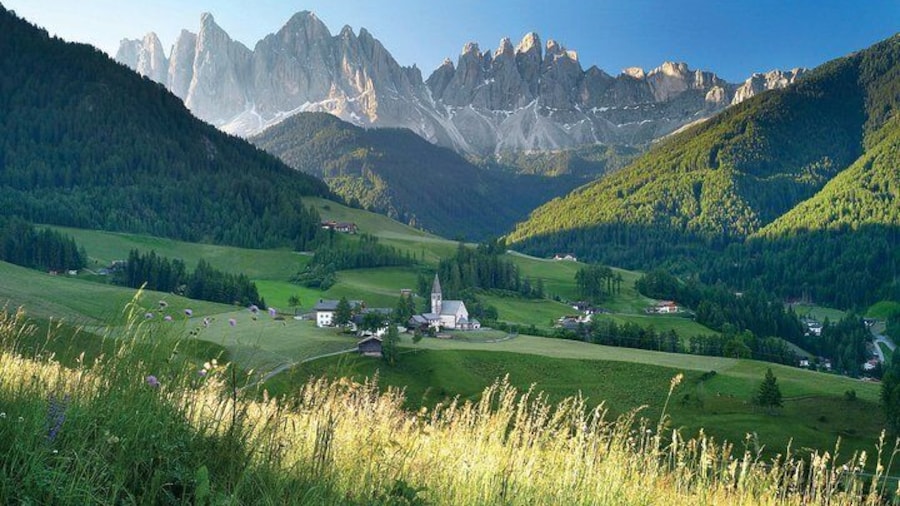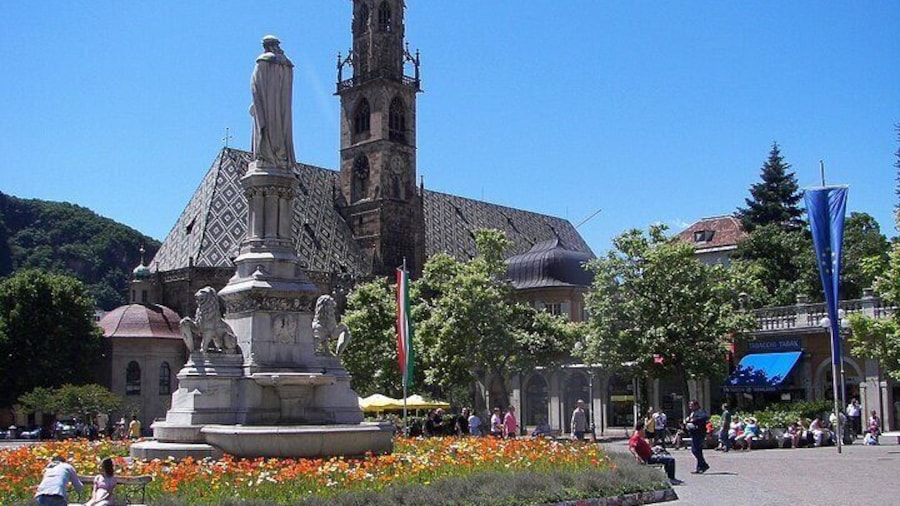Climb into the highlands of northern Italy to find the medieval village of Bolzano, lying in the shadow of the Alps. Walk along narrow alleyways, explore centuries-old hillside castles and take one of several cable cars up into the mountains for dramatic views of Bolzano’s surroundings.
Start your visit by riding the cable car up onto the Renon Plateau north of town. As you ascend, look for the terraced vineyards spread along the hills and the strange pointy rock formations known as earth pyramids. When you reach the top, gaze out over the city and toward the Dolomites, a line of craggy sandstone peaks east of Bolzano.
Descend into the city and start your tour of its narrow, cobblestoned streets at Piazza Walther. Visit at the end of April to see the statue at its center surrounded by vibrant flowers. Tour the Assumption of Our Lady Cathedral, which abuts the square. Step inside to see a fresco of the crucifixion painted in the 1300s.
Though an ancient Austrian village, Bolzano has belonged to Italy for most of the 20th century, so its identity is divided. About a quarter of Bolzano’s population still speaks German. Everything in the city bears both a German and an Italian name. Drive north to see Roncolo Castle, or Castle Runkelstein, a cliff-side mansion built in 1237 by a pair of Austrian lords.
Even older artifacts await at the popular South Tyrol Museum of Archaeology. The most famous exhibit is Ötzi, the mummified corpse from 5,300 years ago found frozen in the nearby Alps. Learn about Ötzi’s discovery and his intriguing death: He was murdered.
Arrive in Bolzano through its international airport or by bus and train connections from Italy, Germany or Austria. Many streets in the city are inaccessible for cars, so it is best to get around the city on foot and by public transportation. An essential part of visiting Bolzano is walking its medieval streets.

